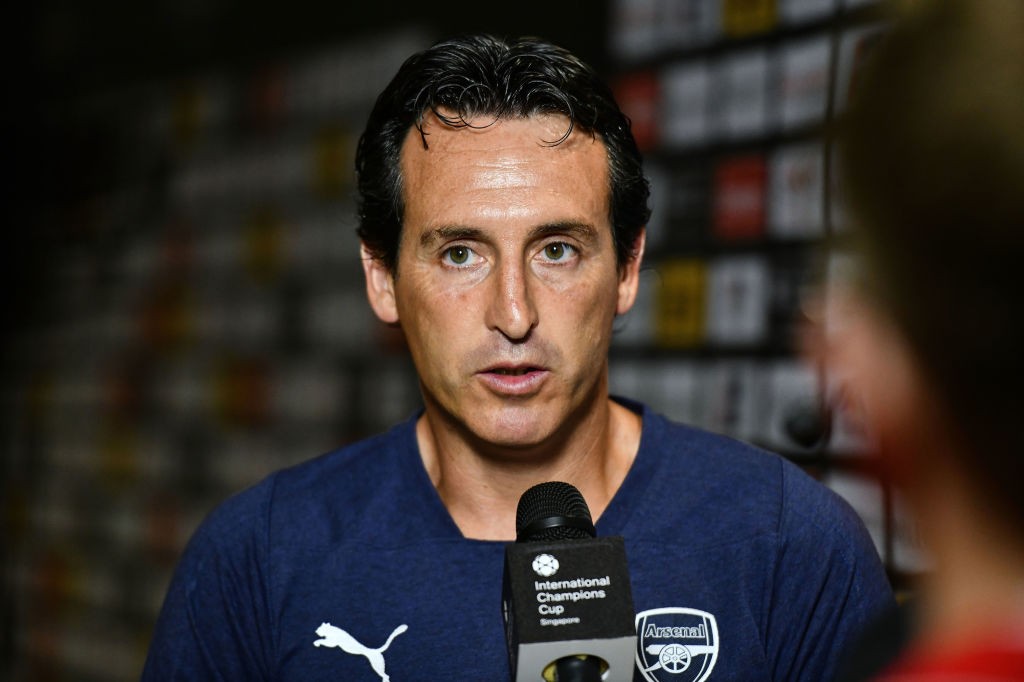
An article 3 years in the making; Jack Coles follows up on one of the best articles of 2013 with a detailed report about how the relationship between Data Analytics and football has progressed.
Editor’s Note: This article will be published in 3 separate posts. This is the first one. Part 1 can be found here.
The provocative and deliberately reductive assessment that: ‘data analytics won the Champions League final in 2012’, appeared in the first instalment of this (thankfully) developing narrative on outsideoftheboot.com back in 2013. With this in mind, you could also say that a surprising lack of attention to available data analysis lost the Champions League final in 2016 too – (the latter assertion being equally reductive, and slightly wordier).

The 2016 Champions League final, the first to go to penalties since 2012, meant that when the final whistle went on the last instalment of a cramp-laden extra-time, a large amount of attention should have been focused on who would win the coin toss. As Simon Kuper, the author of Soccernomics attests: ‘The key moment in any shoot-out is the coin toss’. So, win the toss, choose to go first, and give yourself a simple, slight, yet telling advantage over your opponents which could ultimately win you the Champions League? Don’t mind if I do.
As discussed on outsideoftheboot.com back in 2013, penalties present a great opportunity for simple data analysis, and – indeed – much is known about penalties through the amount of research conducted on the set-piece by academics, and football clubs and their staff. There are many ‘truths’ about penalties – for example shooting down the middle for the kicker is rare, but it’s rarer still that the goalkeeper elects to stay there. Think the Panenka. Another tested conclusion is that penalty kicks are unfair. The team taking the first kick wins about 60% of the time. In the interests of full disclosure, it’s uncertain as to why this is the case (in same way that home field advantage is obviously present in football – although it appears to be shrinking – but no one really knows why either).
So why did Atlético Madrid choose to go second, having won the toss? Atletico’s apparently bizarre lack of awareness of one of the central tenets of penalty shootouts (go first!), was followed by a further challenge to credulity when the team exhibited a kicking strategy during the shootout, proving they had done some work on the laptop beforehand. All of the Atlético Madrid players shot to Keylor’s right (interestingly, Real Madrid’s kicking strategy was the opposite; they all shot to Jan Oblak’s left). Perhaps the losing finalist had their reasons, perhaps Godín was having a mad one, but when Cristiano Ronaldo reminded everyone he was playing it was probably too late.
The losing Madrid club’s indiscretion notwithstanding, data analytics has been further embraced within football over the last few years – as was predicted. At the 2016 MIT Sloan Analytics Conference, a useful annual barometer for the achievements of analytics in football, the football panel were unanimous in declaring analytics were far more accepted in the sport, even over the past 12 months.
On that panel, Chris Anderson, Executive Vice Chairman of Coventry City F.C., and co-author of The Numbers Game said: ‘What seems to have happened is now all of a sudden you have these folks with an interest in this area, ability in this area, take responsibility within football clubs. There are a number of projects out there in the world right now that people aren’t laughing at any more. There’s a public side to it; there’s private side. There’s a whole lot more of it, it’s much more varied’.
In summary, data analysis in football has advanced. Just take The New York Times, which featured a 2010 article entitled: ‘When it comes to stats, soccer seldom counts’. The leading sentence in that article stated that ‘People in soccer have historically paid little attention to statistics’. This seems to be changing rapidly.
Arsenal F.C., for example, purchased the US-based data analytics company StatDNA for just under £2.2m in December 2012, and have consulted on recruitment with them for players ever since. When asked if it was a ‘yes’ that Arsenal had used StatDNA’s analysis to help sign Brazilian defender Gabriel Paulista from Villarreal CF in 2015, Arsène Wenger replied ‘it’s not a no’, simultaneously being both totally obvious, needlessly cryptic, paradoxical and using a double negative all at the same time.
Cheekily, it should be documented here that Wenger’s economics degree was obtained in 1972, at a time when the subject dealt almost exclusively in macroeconomics rather than dealing with vast amounts of data analysis, which is a possible explanation for Gabriel’s modest impact at the club.
Indeed, summer 2016 has seen adjustments made to Arsenal’s scouting team to incorporate better analytics. For instance, the man who scouted Gabriel, Henrik Almstadt, left to join Aston Villa. He has been replaced by Ben Wigglesworth (signed in February 2016), former Head of Technical Scouting at Leicester City, who is credited with superb analytics work and video scouting which helped find all those Leicester City players everyone is going crazy about at the moment. At the time of writing, Arsenal hope to sign Steven Walsh as chief scout, and their scouting restructure is to facilitate that. Leicester City are an excellent example of a club using data analysis, and Arsenal have clearly seen that. It’s telling that Arsenal have identified Steven Walsh before Jamie Vardy as an important signing, although both have been hard to convince to join them from Leicester City it seems. More on this later…
By far the biggest story in the rise of data analysis in football since 2013, and maybe so far, has to be FC Midtjylland. The 2014-2015 Danish Superliga champions were very vocal in early 2015, courtesy of two or three big internet stories covering the side, in De Correspondent in Holland, and The Guardian in the UK, about their use of data analytics. De Correspondent’s article is clearly the best of the many on the Danish club, which renewed discussion last season, around the time they defeated Manchester United 2-1 at home in the 2015-2016 Europa League round of 32.
Rasmus Ankersen, author, occasional TED-talker, former FC Midtjylland youth player and UEFA A Licensed coach, is the chairman of FC Midtjylland, and explained the clear difference in their team and why it represents such a big departure from other teams using data analysis. As de Hoog at De Correspondent presents, ‘As [Ankersen] puts it, while there are definitely some very smart people with bright ideas working at big clubs, “They don’t have any true influence on important decisions their clubs make. [says Ankersen]” Not so at Midtjylland. The revolution is coming from the top, because there the boss is an analyst’.
And so is the owner, Matthew Benham, the professional gambler and owner of Brentford F.C. too.
Indeed, Brentford point to the money made on Andre Gray (although both buying and selling fees officially undisclosed, Brentford are thought to have made a 12-fold profit) as evidence that they are using analytics in the right way. Brentford have also employed a certain Mr. Rasmus Ankersen in the summer of 2015, to co-direct the club, a role he considers more full-time than his role in Denmark. There is therefore a safe assumption both clubs employ the same approach to data analysis, if there was any doubt before.
One area in which FC Midtjylland definitely have excelled in, has been set-pieces (sound familiar?). In their Superliga winning season, they scored close to a goal a game from set-pieces. De Hoog confirms Midtjylland’s reputation as free kick specialists: ‘Since the Benham/Ankersen takeover, the club’s attention to set pieces are yielding them a lot of cheap goals – as they think set pieces are underexploited by football as a whole.
Set pieces are discussed in training and in a formal monthly meeting, with Ankersen, the coaches, and three players present, and sometimes an outside expert is asked to comment. ‘Last month, we had a former American football player from the NFL sitting in.’
This incentive has a clear effect on the pitch. In a match against Esbjerg, assistant coach Brian Priske—who is in charge of set piece routines—stood up from the bench to instruct players every time Midtjylland conceded or won a free kick in the vicinity of the goal, an unusual sight in a sport where usually only the head coach gets up from the bench.’
In the season Midtjylland won the league, they scored four times from set pieces in three separate matches.
Another successful avenue for Midtjylland’s analytics is player recruitment, revealed by de Hoog: ‘[Tim] Sparv landed on the club’s radar because Midtjylland’s model was bullish on his former club, Greuther Fürth, from Germany’s second tier. Our model says that last season, Greuther Fürth were good enough to play in the English Premier League.’
Ankersen is able to say this because the model Midtjylland use ranks all the clubs in Europe as if they are in one big league. Greuther Fürth didn’t play against the Premier League, but they did play HSV of Hamburg, who in turn played Bayern Munich, who, in the Champions’ League, played Manchester City, who played the rest of the Premier League. Thanks to European club tournaments, the model can cross-reference results from different leagues and use advanced statistical tools to rank every club on the continent.’
As the above may inadvertently reveal, it’s possible Midtjylland may be in contravention of the Law of Large Numbers, but Ankersen recognises the role of luck in their league winning season, and their set-piece successes. Sean Ingle’s article in The Guardian quotes Ankersen as saying, ‘Too often in football, the result determines the narrative – for managers, reporters and fans. Ankersen dismisses this as facile. “For instance, when we played at home against the bottom team, we won 2-1,” he says. “But our model massively downgraded us because we were super lucky. A lot of people said well-done but it was a terrible performance – that is the message we should convey. No one wants to say they were lucky when they win. But in football, success turns luck into genius.”’ Indeed, Midtjylland finished the 2015-2016 Danish Superliga only third, but in the spirit of Ankersen, maybe they were just unlucky.
The two clubs have therefore become the public beacon of data analysis in football. Brentford and Midtjylland disprove The New York Times’ damning indictment. At least in rhetoric. As the saying goes, ‘if the only tool you have is a hammer, everything looks like a nail’. And so, both Midtjylland and Brentford are credited for data analysis which may have had nothing to do with their successes. When a rich man buys a small Danish club and a nearly bankrupt English club and puts money into them, a sceptic says it’s hard to imagine there’s definitive causation between analytics and achievement as opposed to the aforementioned riches, or some other cause that has made other teams successful too. This seems to be corroborated in The Guardian where Midtjylland’s former defender Erik Sviatchenko (now at Celtic) puts it: ‘Matthew [Benham] is the X-factor. His money is hugely important. But his use of statistics and mathematics is the extra thing that gives us the advantage. It is like Moneyball.’
Every sports analytics article has to mention Moneyball, you see.
(Provocatively, in an article advertising the use of data analysis, even Moneyball has its critics. Allen Barra of the Wall Street Journal states, ‘Mr. Lewis [the author of Moneyball], having fallen in love with his scenario, looked at it through rose-colored sunglasses.’ There’s a suggestion the team felt a strong unity due to unique approach to recruitment, which engendered a greater team spirit, which propelled them to better on-field output. Maybe Midtjylland benefitted from this too?)
A Sky Sports article on FC Midtjylland’s Europa League pairing with Manchester United retold Midtjylland’s (which doesn’t get any easier to spell by the way) story. Intriguingly, it states, ‘the club uses an expected-goals model to provide coaches with added in-game insight into how the team is performing’. Whilst there’s no mention of expected goals models in any of the information about the club from other sources, it’s not ridiculous to assume the Danish club (- that’s a good way to avoid spelling their name actually) use an expected goals model. If Midtjylland and Brentford are football’s best example of clubs using data analytics, then ‘Expected Goals’ is the best example of analytics those clubs might use.
Written by Jack Coles

























































